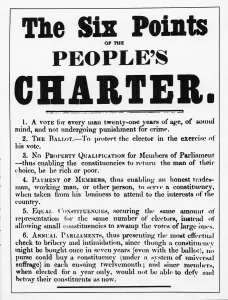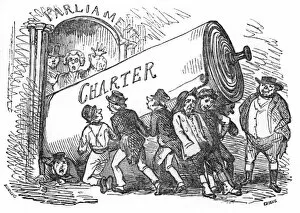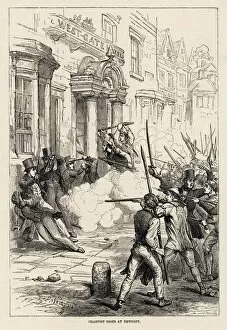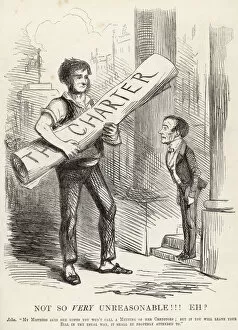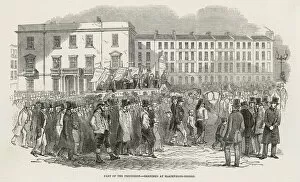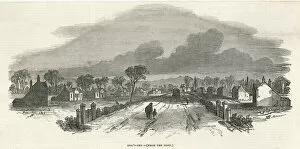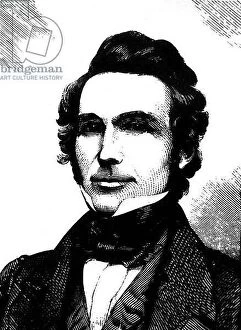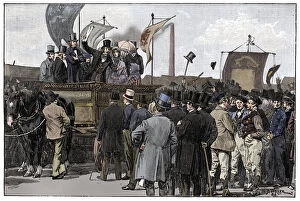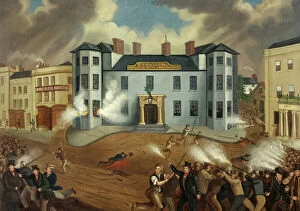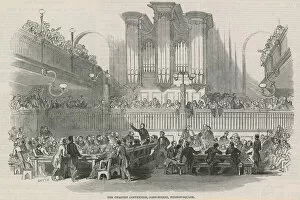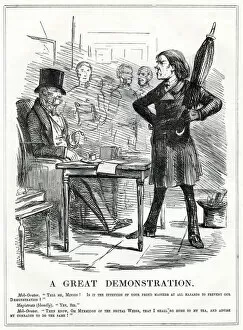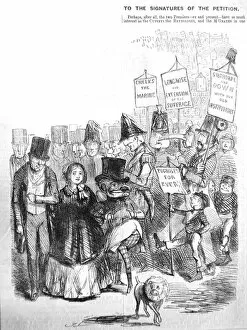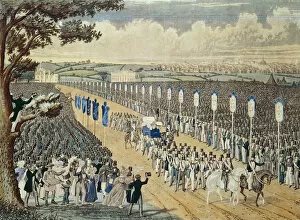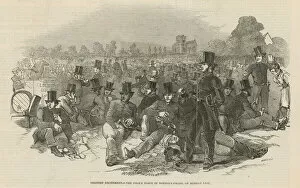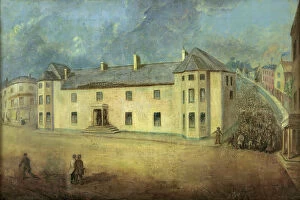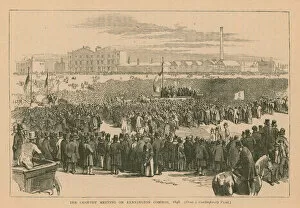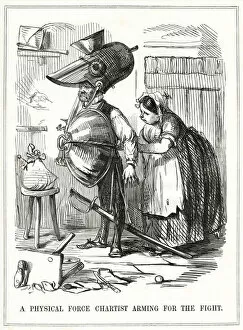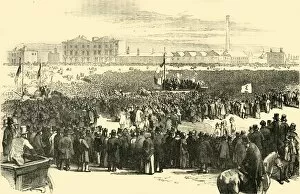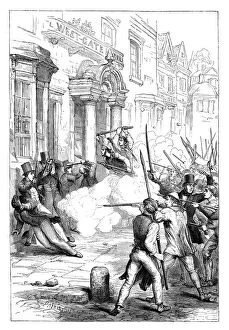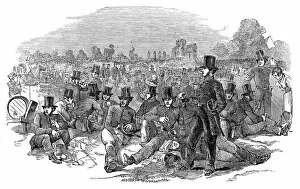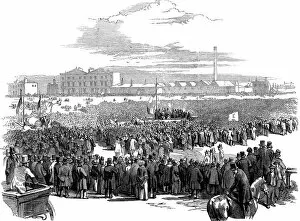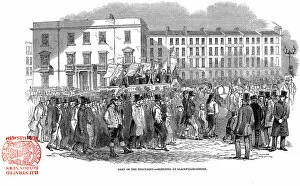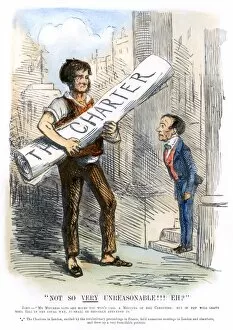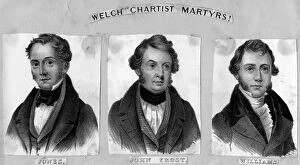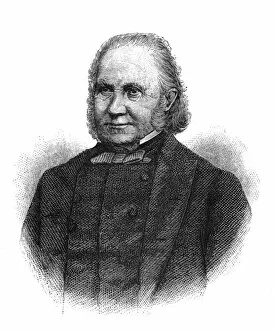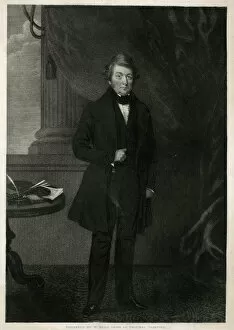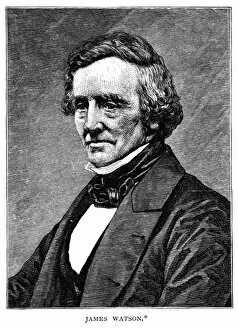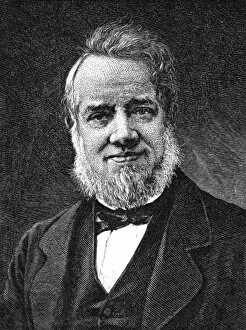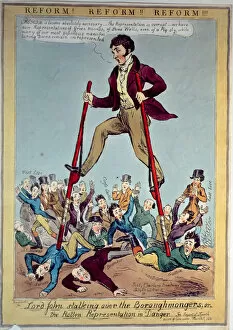Chartist Collection
Chartism was a 19th-century political movement that aimed to bring about social and political reforms in Britain
All Professionally Made to Order for Quick Shipping
Chartism was a 19th-century political movement that aimed to bring about social and political reforms in Britain. The movement derived its name from the People's Charter, which outlined six key demands for democratic rights. This litho photograph captures the essence of Chartism, depicting The Six Points of the Peoples Charter in black and white. One significant event associated with Chartism was the Newport Riot, where protesters clashed with authorities while advocating for their rights. This incident highlighted the passion and determination of Chartists to fight for equality. Cartoons played a crucial role in spreading awareness about Chartism's goals and ideals. They served as powerful tools to convey messages through visual representation, often satirizing those who opposed reform. The Chartist Convention brought together leaders from across Britain to strategize and discuss ways to achieve their objectives peacefully. It was a symbol of unity among like-minded individuals committed to improving living conditions for working-class people. In 1843, a Chartist party emerged, representing the interests of ordinary citizens who sought fair representation in government. Their formation marked an important milestone in British politics as they challenged traditional power structures. The Great Chartist Demonstration showcased the strength and solidarity of this grassroots movement through vibrant cartoons depicting mass gatherings demanding change on streets filled with passionate supporters. Chartist Processions were grand displays of public support that attracted thousands marching together towards shared goals. These events created a sense of community among participants while emphasizing their determination for social justice. Feargus Edward O'Connor stands out as one of Chartism's influential leaders. As an Irish Chartist leader, his line engraving portrait captures his dedication towards achieving equal rights for all citizens during this transformative era. Chartist Housing Estates provided affordable housing options for working-class families struggling under oppressive living conditions. These estates represented progress towards addressing societal inequalities by offering decent homes at reasonable prices. Chartist Meetings were vital platforms where activists gathered regularly to discuss strategies, share ideas, and inspire one another.

